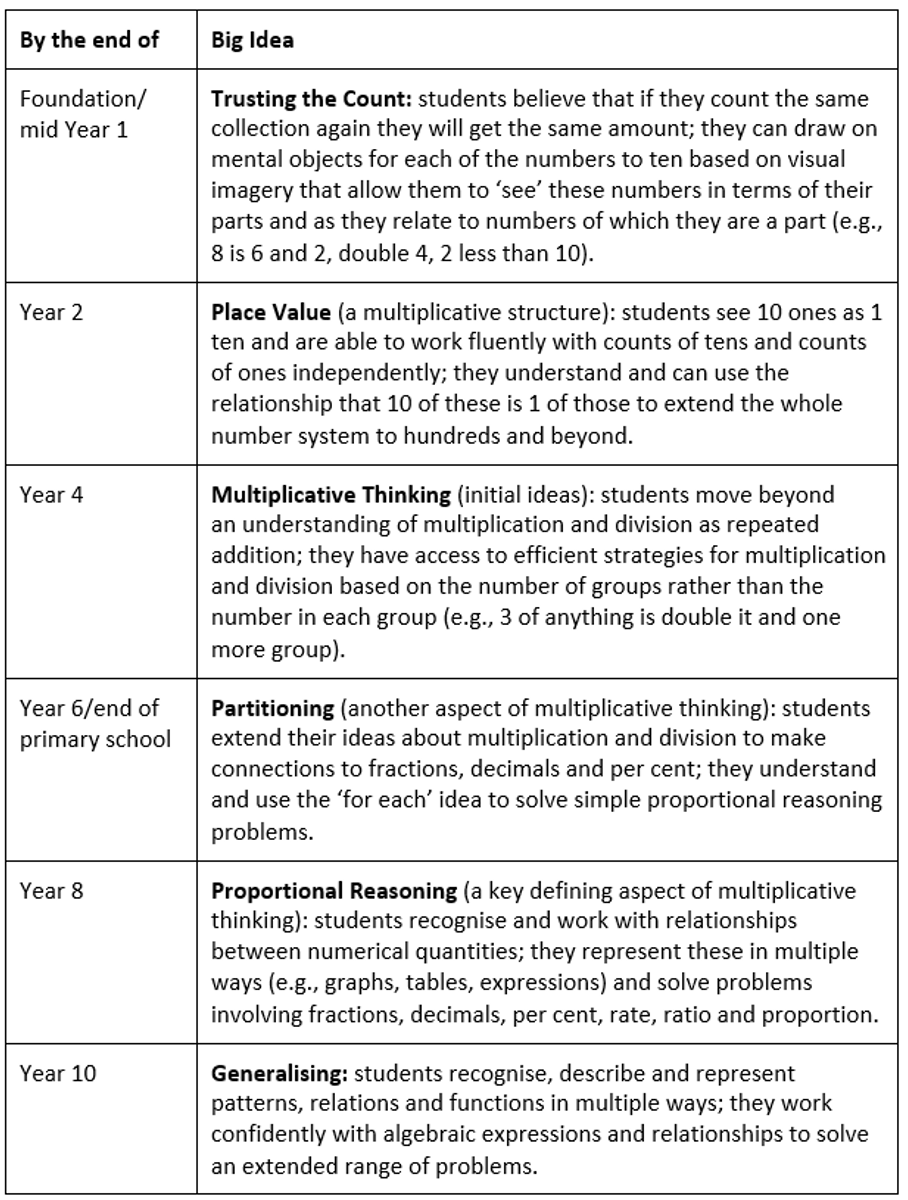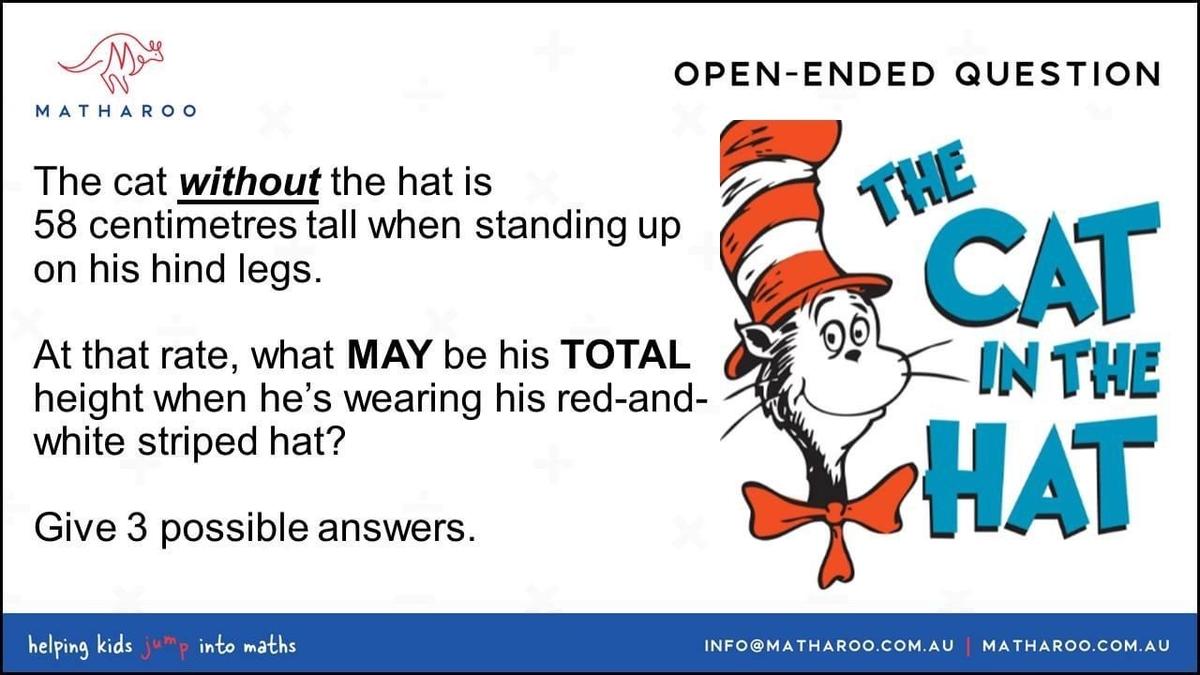Mathematics

What a busy time it has been in the learning and teaching of Mathematics at Rangeview. Students in all levels have been busy exploring, calculating, measuring, estimating, converting, modelling, comparing, questioning and articulating their knowledge in Maths. They have achieved this by learning through play, manipulating concrete materials and using digital technologies to show their Mathematical thinking.
We congratulate our youngest students on their first 100 days of school and enjoyed hearing about all the wonderful activities they engaged with whilst learning about the number 100!
The ‘Big Ideas’ in Mathematics
Emeritus Professor Dianne (Di) Siemon states that “making connections and building relationships is fundamental to the growth of mathematical understanding” [State of Victoria (Department of Education and Training) 2022]. Adding to more than 50 years of research in the area of ‘Big Ideas’ in teaching Mathematics, Di lists trusting the count, place value, multiplicative thinking and partitioning as the four ideas in Primary School, and adds proportional reasoning and generalisation in Secondary School. Having a sound understanding of these concepts enables students to make connections in Maths, apply their knowledge in a real-world context and supports them to problem-solve. A brief explanation of each of these ideas is outlined in the table below.
[Table 1: The big ideas in Number by key levels of schooling (Siemon, 2006).]
At Rangeview teachers are very aware of these ‘Big Ideas’ in Mathematics and ensure that planning of lessons include rich open-ended tasks and problem-solving activities that enable students to extend their thinking. For further details and an explanation by Di Siemon on why these ‘Big Ideas’ in Mathematics are important please watch this short 5-minute clip The Big Ideas.
Family Game Time!
Levels 1-2: 5 Moves to 100
This is a game for 2 or more players that involves rolling a 6-sided die 5 times. After each roll, you record the number on the die in either the tens or ones column. The player closest to but below 100 wins. Keep a running record of your score after each round. For a demonstration on how this game is played please watch Michael Minas’ demonstration as he plays the game with his son. '5 Moves to 100' game. Below is an example of how to draw up your table.
Problem-Solving Time
Levels 3-6: Date Maths
Try using all the digits in today’s date to make all the numbers from 1 to 20. You can use single digits or put 2 or 3 digits together. You can use any operation (x + - ÷) to make as many numbers as you can with a total between 1 and 20. How many numbers can you make? Have a go with your family and let us know if you manage to create all 20 numbers!
Levels 4-6: Sample open-ended tasks
Brain teaser:
For parents and middle-senior students
Can you find 5 consecutive (counting upwards) numbers that add up to 80? Solution in our next newsletter.
We look forward to sharing some photos of work from our Level 1 and 2 students who have been engaging in some rich problem-solving activities in our next newsletter. Please don’t hesitate to contact us via the office for further information on how we can support you and your child at home with Mathematics.
Go Maths!
Vicki Tzimos and Lee Giddings (34V)




